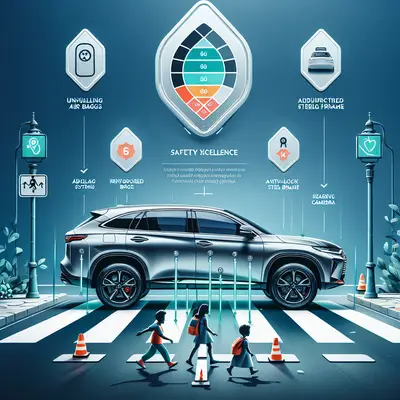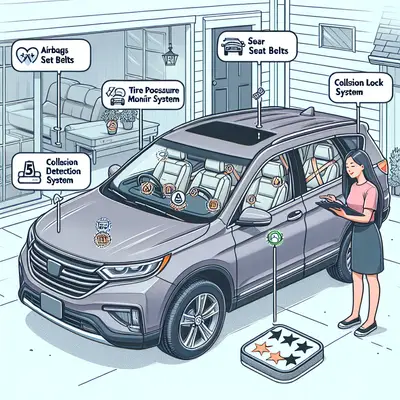Insight 1: The Unseen Hero - Electronic Stability Control
Electronic Stability Control (ESC) may not be the most glamorous feature in your SUV, but it plays a critical role in ensuring safety. As an advanced technology that assists in maintaining control during extreme steering maneuvers, ESC has been proven to significantly reduce the risk of fatal single-vehicle crashes.
Insight 2: The Fine Print - IIHS versus NHTSA Ratings
While both the Insurance Institute for Highway Safety (IIHS) and the National Highway Traffic Safety Administration (NHTSA) assess vehicle safety, their methodologies differ. Understanding these differences allows one to make a more informed decision, taking into account the various aspects of vehicle safety evaluated by each organization.
Insight 3: The Invisible Shield - Advanced Safety Features
Advanced safety features such as autonomous braking, lane departure warnings, and blind-spot detection systems provide an additional layer of protection. They are the invisible shield that continuously works to prevent collisions, making them a vital consideration when assessing the safety rating of an SUV.
Insight 4: The Art of Crashworthiness
Crashworthiness refers to a vehicle's ability to protect its occupants during a collision. It encompasses various factors, including the structural design of the vehicle, the effectiveness of seatbelts and airbags, and the vehicle's crumple zones. A high crashworthiness rating is a testament to the vehicle's ability to safeguard its occupants in the event of an accident.
Insight 5: The Future of Safety - Autonomous Driving Technology
Autonomous driving technology is set to revolutionize the face of vehicle safety. With the ability to detect and respond to potential hazards faster than a human driver, this technology holds the promise of significantly reducing road accidents. As such, the presence of autonomous driving features in a family SUV is an aspect worth considering.
Conclusion
When it comes to family SUVs, safety is not a luxury, but a necessity. By understanding the intricate elements that contribute to a vehicle's safety rating, families can make informed decisions that prioritize their safety and wellbeing. As technology continues to evolve, the landscape of vehicle safety will undoubtedly transform, compelling us to stay informed and adapt. After all, there is no greater peace of mind than knowing your loved ones are protected.



